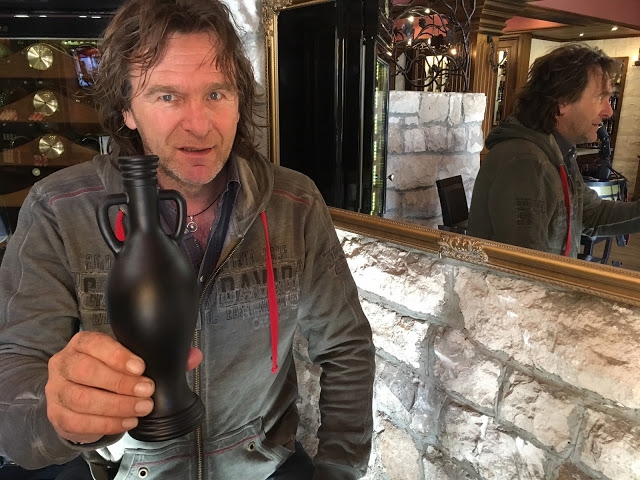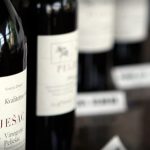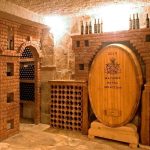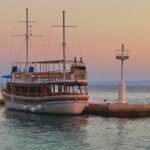
Marino Markežić Kabola was the first in Croatia to offer wine from amphorae for tasting. It was a Malvazija from 2005, released in 2008. The next to make wine in amphorae was Tomislav Tomac, a mix of Chardonnay and a dozen old Plešivica varieties from 2007, available since the end of 2009. Tomac later made in amphorae a Rhine Riesling from 2009, and made an absolute sensation with the 2010 sparkling, Amfora Brut Nature, named by Decanter magazine among the 75 most exciting wines tasted in 2016. Qvevri from 2011 by his friend from Plešivica, Zdenko Šember, the Wine Stars rated with five stars.
This year two Dalmatian winemakers will present to the public their amphorae wine. Ante Milina from Smokvica on Korčula Island will be the first to boast of using the primordial approach in turning grapes into wine in a terracotta amphora, while Pelješac winemaker Mato Violić Matuško will present his Dingač from amphorae around Easter. The two are family related, as Mato is the godfather to Ante, while Ante’s father Željko is the best man to Mato’s son Mate. Mato jokes that his amphorae are not a result of some shipwreck near the Pelješac coastline, but of his decision three years ago to bury two Georgian amphorae of 1.000 litres each and thus become the first winemaker to offer the legendary Plavac Mali from the Dingač terroir in a somewhat different version.
“Therefore, in the way it was done a long time ago when there was no concrete or plastic or wood or stainless steel… This story has, in my humble opinion, turned out quite good, especially considering the fact that for this first amphorae attempt I did not use the Dingač from the best positions. But, all in all, I am very satisfied,” says Mato Violić Matuško, the winemaker who can boast of recently exporting 8.000 bottles of his expensive Royal Dingač to China, after the Chinese traders advanced him the entire sum.
Matuško, who rarely, or not at all, sends his wine to ratings of wine festivals, can brag since last year that he won the gold medal at the Challenge International du Vin in Bordeaux for the Dingač Royal 2007, as well as for the Dingač Reserve 2008. The amphorae Dingač will not be sent to competitions, but he considers it a large victory to complete the production. Mato would not be himself if he did not add a bit of news to the amphorae story. Such as the Bosnia-Herzegovina ceramist who, following the recipe of old Greeks, made a hundred amphorae moulded after the age-old specimens the divers used to be able to raise from the Adriatic Sea.
“The Greek style of amphorae is for me personally maybe the finest in the history of these containers. I had a hard time finding a craftsman who would do this and bake them in the same way it was done several thousand years ago… The interior of these amphorae is lined with beeswax, just the way it was done when the only resource was beeswax or pine resin. These amphorae have a capacity of 18 or 19 litres, or 30 and 35 litres, and none of them are the same,” says Mato.
After Mato’s Dingač lay for eight months in Georgian amphorae, it was then placed in barrique barrels one to five years old and put to sleep for another year. In the third phase of the “return to history” the Dingač was again moved, this time into clay amphorae made in Bosnia-Herzegovina. In the fourth and final phase of aging the wine was bottled into amphorae – unique half-litre bottles shaped as amphorae which Mato ordered in Italy and had them painted black.
“Uf, just the bottle cost me two euro, and the metal label is not cheap either, arriving from France soon, costing around a euro. This amphora Dingač is not a cheap story, but I believe the entire procedure deserves special treatment and the best packaging.”
But, this is not the end of Mato’s innovation, as those who desire to will be able to buy the Dingač together with the amphorae the Bosniak made him.
For the original and more from Vinske Priče blog on wine, click here.










